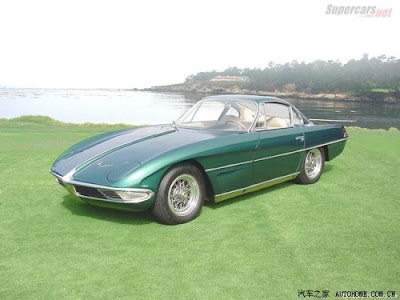
By
sabrebIadeLamborghini.
I like the way the word just rolls off your lips.
Like Eva Longoria or Ricardo Montalban.
But Lamborghini conjures images of rocket sleds that look like they're going 100 mph just sitting still.
Space ships, no FIGHTER space ships that only lack wings......sometimes.
Automobili Lamborghini S.p.A., commonly referred to as Lamborghini, is an Italian manufacturer of high performance sports cars (supercar) based in the small Italian village of Sant'Agata Bolognese, near Bologna. Lamborghini is now a subsidiary of German car manufacturer Audi AG, which is in turn a subsidiary of Volkswagen. Lamborghini is the main counterpart to Ferrari in the Italian sports car business. The company was founded in 1963 by businessman Ferruccio Lamborghini (April 28, 1916–February 20, 1993), who owned a successful tractor factory, Lamborghini Trattori S.p.A..
As told by Ferruccio Lamborghini's son, Ferruccio Lamborghini went to meet Enzo Ferrari at the Ferrari factory to complain about the quality of the clutch in the Ferrari 250 GT he owned. Enzo Ferrari sent him away telling him to go and drive tractors because he was not able to drive cars.
( Now how cool is that? The whole company was born from an insult!)
Lamborghini went back to his factory, had his Ferrari's clutch dismantled and realized that the clutch manufacturer was the same who supplied the clutches for his tractors. In his warehouse he found a spare part which he thought suitable, and when it was installed the problem was solved.
Ferruccio decided that his car was to have a V12 engine, and enlisted the services of talented engineer Giotto Bizzarrini, who had previously worked on a Ferrari V12. The new engine had 4 cams, a short stroke and 2 big bore valves per cylinder, and developed a surprising 350 horsepower (260 kW). The engine featured aluminium construction, with a crankshaft supported by seven main bearings, forged aluminium pistons, and camshafts with their own half-engine-speed sprocket and silent chain. The car the engine was mounted in was designed by Franco Scaglione's Scaglione-Touring.
This Lamborghini 350GTV prototype began making public appearances in 1963, starting with the Turin Auto Show. Sales of the production model, known as the 350GT, began the following year with great success, with over 130 examples sold. Born under the sign of the Taurus, Ferruccio Lamborghini used the bull as the badge by which to mark his new automobile.
technorati tags:porsche ,ferrari ,jaguar ,lamborghini ,lotus ,bugatti ,aston martin,maserati ,alfa romeo,cars,sports cars, exotic cars, classic car,porsche sports car,search sports car,porsche sports








